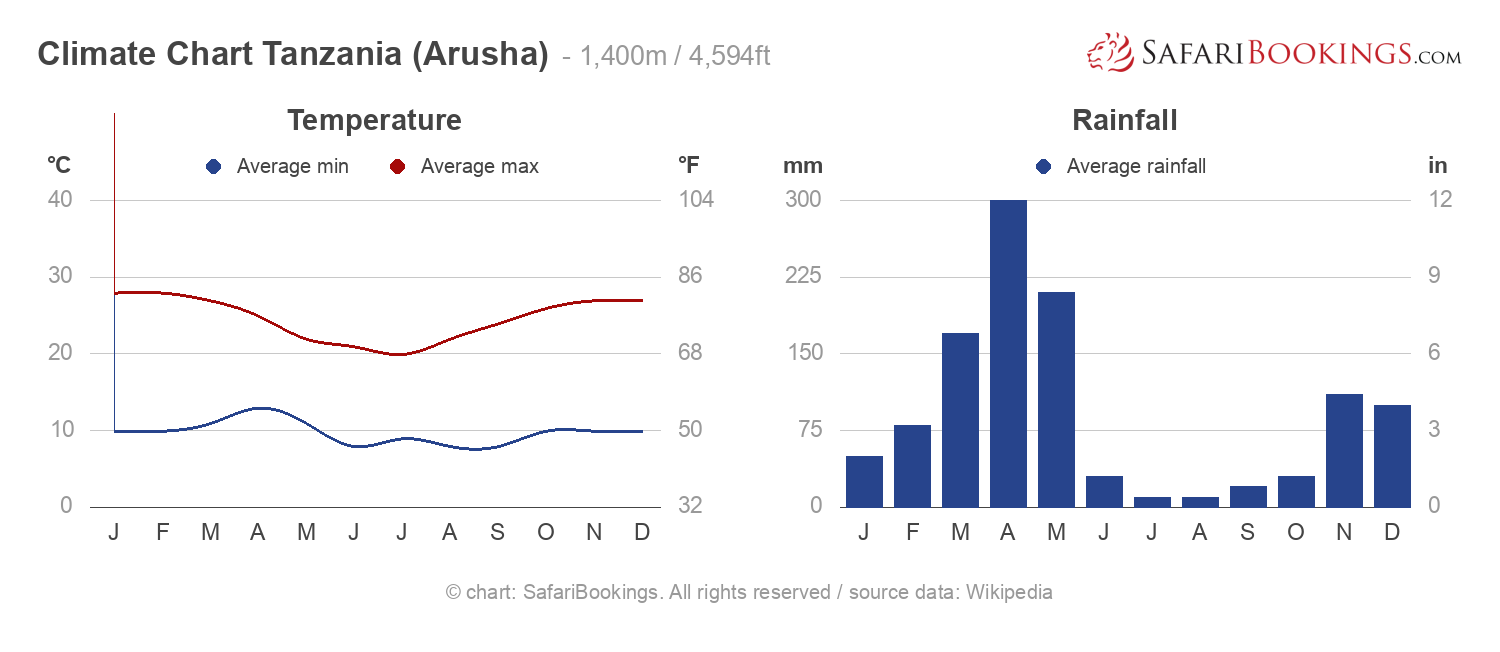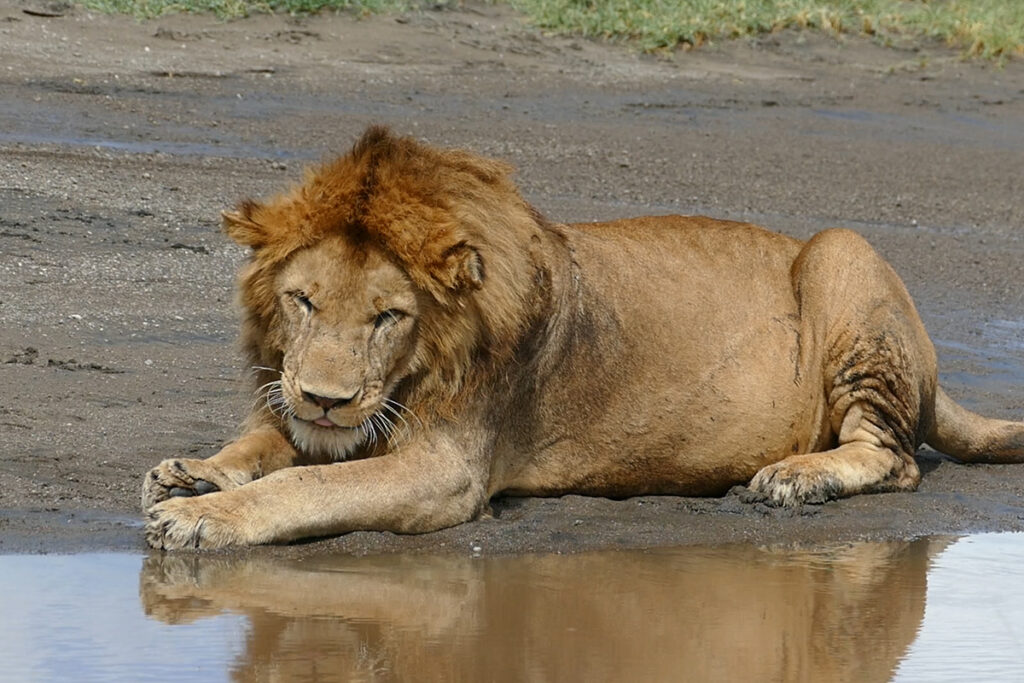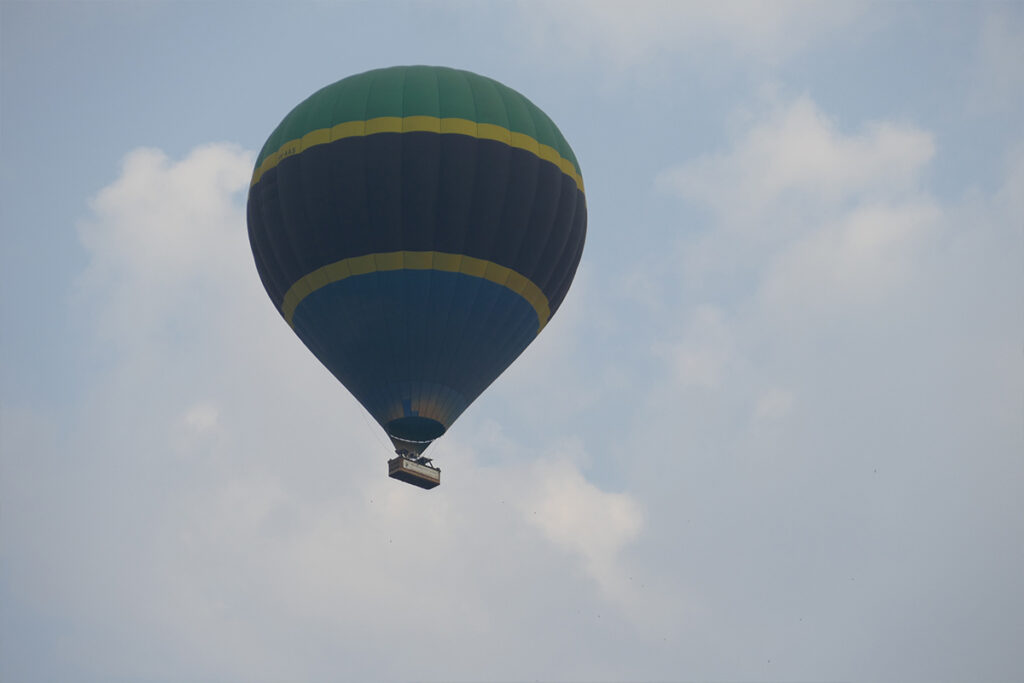Under the vast Tanzanian skies, the weather can dramatically transform between seasons, impacting the safari experience distinctively. How do these changes enhance or challenge the pursuit of spotting the majestic Big Five in the Serengeti? The shifting climates define not just the landscape’s aesthetics but also the rhythm of animal migrations, making the understanding of weather patterns crucial for experts in safari planning.
Historically, Tanzania’s geographic diversity contributes to its unique climatic zones, varying from the arid savannas to lush forests. Statistical records highlight that the rain season, stretching from March to May and November to mid-January, invites vibrant flora attracting numerous wildlife species. Planning safaris around these pivotal periods can ensure explorers encounter the raw, untamed beauty of Tanzanian wildlife at its fullest flourish.

Tanzania Safari Weather Guide
When planning a safari in Tanzania, understanding the weather is crucial. The country’s climate can change dramatically, affecting wildlife and travel plans. During the dry season, from June to October, the weather is gorgeous, offering clear skies and excellent animal sightings. The Serengeti often witnesses large gatherings of wildlife, making it a popular time for photographers. According to this post, evolving trends in safari adventures are perfectly timed with this season.
In contrast, the wet season, which peaks from March to May, presents different challenges and opportunities. Rain showers can be heavy, transforming the landscapes into lush, green habitats. While the roads might become tricky, this period is ideal for birdwatchers. Rare bird species are abundant, and fewer tourists mean more personal experiences. Travelers often find great discounts during this period.
Preparing for a Tanzanian safari requires a careful look at the fluctuating weather throughout the year. Light and breathable clothing work best in the dry months, but a good raincoat is essential for rainy journeys. Safaris in regions like Tanga, mentioned here in the article, are gaining popularity due to diverse weather conditions. These experiences allow for unique adventures. Take note of what gear is necessary for different weather patterns for a comfortable trip.
Weather not only directs the physical journey but also the kind of wildlife encounters one can anticipate. The Great Migration, for instance, coincides with specific weather patterns. It is crucial to synchronize your travel with animal movements to witness this wonder. Safaris become more rewarding when weather knowledge aids in these unique wildlife experiences. Embracing the natural shifts allows for better-planned safaris, offering memorable moments.
The Role of Weather in Planning Tanzania Safaris
Weather significantly shapes the success of a Tanzanian safari. Knowing the seasonal variations helps in choosing the best times for wildlife viewing. The dry season, usually from June to October, is excellent for spotting animals near water sources. Animals congregate around rivers and lakes, making them easier to find. This season also offers more comfortable weather for travelers.
On the other hand, the wet season, spanning from March to May, brings heavy rains and lush landscapes. This period can make travel challenging due to muddy conditions. However, it offers unique advantages like fewer tourists and lower prices. Birdwatchers especially benefit as migratory birds are abundant. It’s a trade-off that some adventurous travelers are willing to make.
When planning a safari, it’s essential to synchronize travel dates with animal behaviors influenced by weather. The migration of wildebeests, zebras, and antelopes happens in response to rains. These movements provide incredible opportunities for witnessing dramatic wildlife scenes. Using weather patterns to your advantage ensures memorable encounters. Being aware of these natural events can elevate the safari experience.
Moreover, packing appropriately for different weather conditions is key to a comfortable safari. Lightweight, breathable clothing is ideal for the hot, dry season. During the wet season, waterproof gear and sturdy boots become essential. Listed items might include:
- Breathable clothing
- Sun hats and sunscreen
- Waterproof jackets
- Sturdy boots
Having the right gear ensures you stay comfortable and focused on the adventure.
How Climate Changes Shape Tanzania’s Wildlife Patterns
Climate change plays a vital role in shaping Tanzania’s wildlife patterns, affecting habitats and food availability. Animals like elephants and lions adapt their behavior based on weather changes. During dry seasons, water scarcity pushes animals towards the few remaining water bodies. This creates hotspots of activity, making them easier for visitors to observe. Conversely, abundant rain shifts their territories as new grazing grounds flourish.
The Great Migration is a stunning example of climate impacting wildlife in Tanzania. As rains begin, over a million wildebeests, zebras, and gazelles move across the Serengeti in search of fresh pastures. This massive migration follows the rain, a life-giving event driving the seasonal rhythms of the savanna. It’s a cycle deeply intertwined with weather patterns. Visitors planning safaris during these times witness nature’s grand spectacle.
Weather fluctuations can also introduce challenges, such as habitat loss and newly vulnerable species. Unpredictable rains can alter breeding habits, affecting animal populations. For instance, species that depend on stable environments may struggle to adapt quickly. This can disrupt the food chain, impacting predator-prey dynamics. Understanding these intricacies is crucial for conservation efforts.
To monitor these changes, researchers often use data on animal movements and climate patterns. Tools like GPS tracking and climate models create detailed analyses. Here is a sample table illustrating observed behaviors during different climate conditions:
| Condition | Wildlife Behavior |
|---|---|
| Dry Season | Animals gather at water sources. |
| Wet Season | Migration to new feeding areas. |
These insights help in crafting strategies to maintain ecological balance despite changing climates.
Best Times for Safari in Tanzania Based on Weather
Planning a safari during the cool, dry season from June to October is ideal for travelers seeking impressive wildlife encounters. This period offers minimal rainfall, making it comfortable for visitors and optimal for animal spotting. Water sources become gathering points for thirsty wildlife, providing consistent and rewarding sightings. Tourists find it easy to navigate the parks due to the dry terrain. The pleasant weather also enhances photography opportunities, capturing the beauty of the African landscapes.
From December to March, the weather transitions into a hotter, yet vibrant, short rainy season. Although the rains bring new challenges, the bush comes alive with lush vegetation. This is also the calving season for many species, offering a chance to see newborns taking their first steps. Birdwatchers will find this time particularly rewarding, as migratory birds arrive, adding diversity to the wildlife spectacle. The combination of rain and life makes this period uniquely beautiful.
While the long rainy season from March to May may deter some due to heavier rains, it also presents its own unique charm. There are fewer visitors, translating to more personalized safari experiences. Accommodations might offer lower rates, making it budget-friendly for the adventurous traveler. Observe the raw beauty of nature as the land revives itself with rainwater. Experience the tranquility of the parks without the usual crowds.
To assist in planning, here is a table showcasing the best times based on specific interests:
| Month | Best For |
|---|---|
| June to October | Big Five sightings, comfortable weather |
| December to March | Calving season, bird watching |
| March to May | Budget travel, lush scenery |
Ultimately, the best time for a Tanzanian safari depends on the experiences you seek. Whether it’s witnessing the majestic Great Migration or savoring the quiet beauty of the savannas, each season brings its own adventures. Armed with knowledge about the seasons, travelers can choose the perfect time to explore Tanzania’s breathtaking wildlife. Embracing the diverse climate lets you connect more deeply with the natural world. Be prepared and open to discovering the wonders waiting in this stunning African destination.
Impact of Rainy Season on Tanzanian Safari
The rainy season in Tanzania transforms the landscape into a lush paradise, influencing the safari experience remarkably. Roads can become muddy, making certain areas challenging to access. Despite these obstacles, the countryside bursts with green, attracting herbivores and predators alike. This season offers unique opportunities to observe animal behaviors that differ vastly from the dry months. The rains breathe new life into the ecosystem, sustaining diverse flora and fauna.
Heavy rains can temporarily impede travel, altering some safari routes. However, these conditions lead to more intimate encounters with animals, as fewer tourists visit during this time. Travelers seeking solitude and serene experiences find the rainy season rewarding. Additionally, many safari lodges offer discounts. This makes it an attractive option for those traveling on a budget.
Birdwatchers are particularly thrilled during this season, as migratory birds flock to Tanzania. With the rain comes a dazzling array of species, adding color and sound to the bush. For photographers, the vibrant game-viewing backdrop provides stunning images. The combination of wildlife and vivid scenery offers a visual feast. Capturing these moments creates lasting memories for many.
Here is a list of potential advantages of exploring Tanzania during rainy months:
- Lush landscapes ideal for photography
- Fewer tourists, enabling a quieter experience
- Discounted safari accommodations
- Bird watching with numerous migratory species
So, while the rainy season presents some challenges, it also unveils a different face of Tanzania. Adventurers ready to embrace this wet wonderland often find their efforts richly rewarded. The captivating beauty of the rainy season makes for a truly unforgettable safari. It’s an invitation to witness the extraordinary cycles of nature.
Preparing for Weather Extremes on Tanzanian Safari
Weather extremes can significantly impact your safari experience in Tanzania, requiring proper preparation. From intense heat in the dry season to heavy rains during the wet months, travelers must be well-equipped. Packing appropriate clothing and gear is essential. Lightweight, breathable fabrics help combat heat, while waterproof items are vital for rainy periods. A well-prepared traveler ensures a comfortable and enjoyable safari.
Creating a packing list tailored to Tanzania’s climate will help you stay organized. Consider including items like:
- Sun hats and sunscreen
- Mosquito repellent
- Sturdy, waterproof boots
- Layered clothing for varying temperatures
- Portable chargers for electronic devices
These essentials help in adapting to the weather, keeping you protected and ready for adventure.
Monitoring weather forecasts before and during your trip can aid in adjusting plans as needed. Mobile apps and online resources provide real-time updates. Staying informed lets you anticipate changes in conditions. For example, if heavy rains are predicted, routes can be altered to avoid challenging areas. Flexibility is key in navigating weather extremes.
An important aspect of preparation includes safeguarding your health. Carrying a first aid kit, staying hydrated, and consuming safe, clean water are essential habits. Sun exposure and bugs can pose risks, so having the right protection makes a big difference. Also, keeping digital copies of important documents can be a lifesaver in emergencies. Being proactive about these precautions ensures a smoother safari experience.
Finally, communication with local guides and safari operators is crucial. Their expertise provides valuable insights into navigating weather extremes. They can advise on the best times and routes based on current conditions. Their local knowledge enhances your safety and enjoyment. Trusting their guidance adds an additional layer of preparedness.

Frequently Asked Questions
Here are some common questions and answers related to weather patterns and planning a safari in Tanzania. These insights will help you prepare for the best experiences on your adventure.
1. When is the best time for wildlife viewing in Tanzania?
The best time for wildlife viewing in Tanzania is during the dry season from June to October. During these months, animals gather around water sources, making them easier to spot. The weather is also more comfortable for travelers, with clear skies and minimal rain. This season offers optimal conditions for safaris and photography.
However, different regions might have variations, so it’s good to check specific park conditions. The Serengeti, for example, is famous for the Great Migration during this time. Preparation and knowledge about your specific safari destination greatly enhance the experience.
2. How does rainy season affect traveling in Tanzania?
The rainy season in Tanzania, from March to May, can make traveling more challenging due to muddy roads. Rain showers might disrupt certain routes, changing your travel plans. Nevertheless, this season significantly transforms the landscape, creating lush, green scenery that attracts different wildlife. Savvy travelers often enjoy fewer tourists and lower prices during this time.
Birdwatchers especially benefit as migratory birds flock to the region. So, although there are some drawbacks, the rainy season can also provide unique and rewarding experiences. Proper preparation ensures you can enjoy these natural wonders despite the weather.
3. How do tanzanian weather patterns influence the Great Migration?
The Great Migration in Tanzania is heavily influenced by weather patterns, particularly the rains. Wildebeests, zebras, and other animals move in search of fresh pastures and water, dictated by rainy seasons. This journey is essential for their survival, showcasing a dramatic interplay between wildlife and climatic changes. Observing this migration provides an unforgettable safari experience.
Timing your visit to coincide with this natural event requires understanding these weather patterns. Generally, the migration occurs between April and June and then October to December. Watching this movement offers a rare and spectacular view of nature’s wonders.
4. What should I pack for different Tanzanian weather conditions?
Packing for different Tanzanian weather conditions ensures comfort and readiness for your safari. For the dry season, include lightweight, breathable clothing, sun hats, and sunscreen to handle the heat. Sturdy walking shoes and layers for cooler evenings are also important. During the wet season, add waterproof jackets, boots, and insect repellent to your list.
A well-prepared packing list includes both essentials and items tailored to the current weather. Adjusting your gear based on the season helps you stay protected and enjoy your adventure fully. Always consult weather forecasts to make informed packing decisions.
5. Are there any specific precautions for health during safari seasons?
Yes, there are specific health precautions to consider during safari seasons in Tanzania. Staying hydrated is crucial, especially in the dry season. Carry a refillable water bottle and drink plenty of water to avoid dehydration. Using sunscreen with high SPF protects against sunburns and reduces the risk of skin damage.
During the wet season, wearing appropriate clothing and using insect repellent helps prevent mosquito bites. It’s also wise to carry a basic first aid kit for minor injuries. Staying vigilant about health and safety practices ensures a smooth and enjoyable safari experience.



